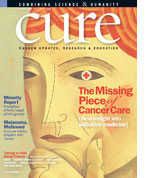Schools Get Schooled on Parents with Cancer
Strengthening the school’s response when a parent has cancer.
Children spend about 1,000 hours each year in school, so it’s no surprise that how a school responds to a parent’s cancer can profoundly affect a child.
Harriet Berman, PhD, is a psychologist with The Wellness Community of Boston and a cancer survivor. She recalls her own kids had mixed reactions from an otherwise sophisticated district. “Some teachers were incredible, and some teachers basically said, ‘Let me know when you can make up the work.’ And that was the extent of the communication.”
Now Berman and her Wellness Community colleagues have developed a teaching program called “When a Parent Has Cancer: Strengthening the School’s Response.” Sponsored by the Hurricane Voices Breast Cancer Foundation, the curriculum has been used in three cities to train more than 400 school personnel. The nonprofit’s sixth annual conference dedicated to the teaching program will be held for free on April 14 in Waltham, Massachusetts (www.hurricanevoices.org/conference).
A good experience begins with a family reaching out to the school. Privacy issues and simple decorum make it difficult for the school to be proactive, even when it’s readily apparent that something is amiss.
“Kids live in their schools. It’s their workplace,” Berman says. “Imagine being in your primary workplace and having no one around you know what’s going on.”
This introductory conversation should include school personnel likely to be involved, including teachers, the nurse, social workers, and perhaps even the principal. Cover the basics: What the diagnosis is, what the treatment is, your family’s mood, the challenges you foresee, and what it is you want your child to understand.
“Be as concrete about your circumstances as possible,” Berman recommends. “The best you can do is open a dialogue.” And establish lines of communication, so that everyone at school who needs information about what’s happening is in the loop. E-mailing all involved school personnel may work best, but it may also make sense to establish a point person at the school so there is only one channel.
Heightened awareness may be all that’s needed at first, but if circumstances deteriorate, the child may need a refuge at school—a person to go to and a place where they can take a break. “Not sitting behind the school alone under a tree, but in a place where they feel safe or comforted,” suggests Berman. The child needs to know it’s OK to use this, but also needs ground rules to prevent abuse. “There is a lot of flexibility that the school needs to bring to the table,” she concludes.
Because cancer, either under treatment or in remission, tends to cast a long shadow, Berman suggests asking school personnel to put a regular reminder in their appointment book to check in. “Everyone can sort of forget the kid is still dealing with this,” she says.
